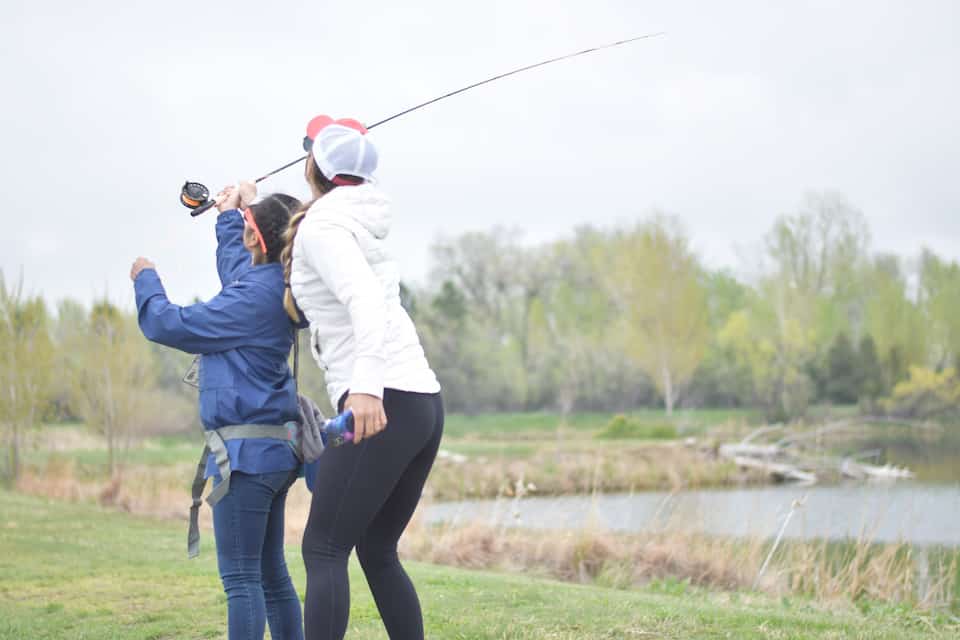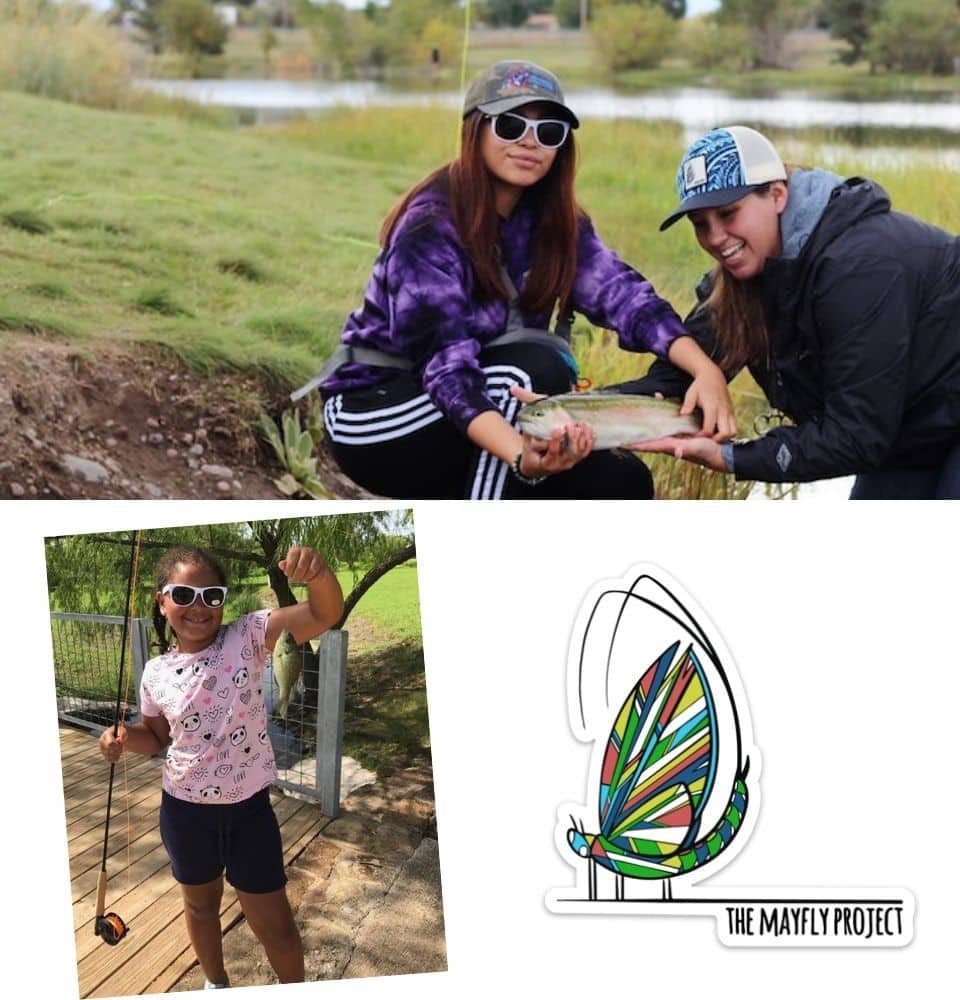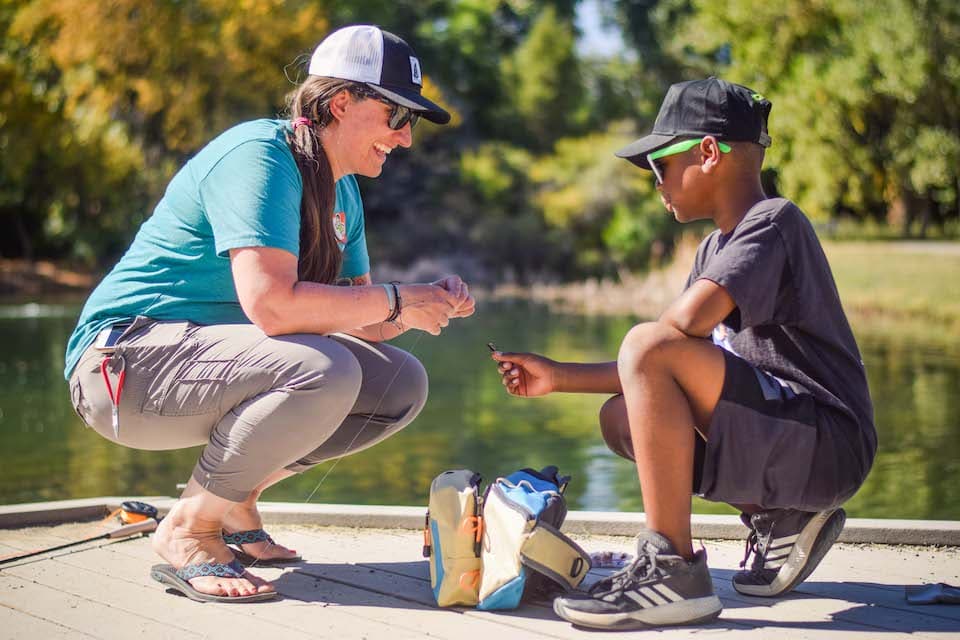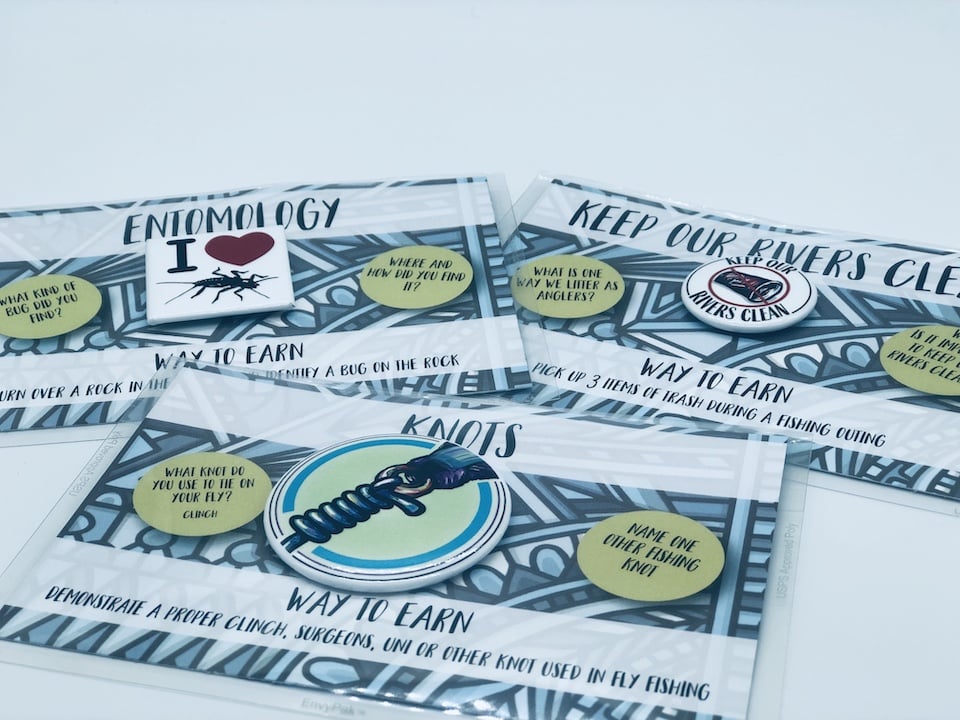We noticed social media posts surrounding this non-profit, The Mayfly Project. It’s an organization that mentors foster children through fly fishing. It can’t get any more cool than that – spending time on a river somewhere with a kid who not only wants to learn about fly fishing, but also who might be in serious need of a mentor for lots of other reasons.
We reached out to Kaitlyn Barnhart, co-founder and national program director of The Mayfly Project, and learned more about this exciting organization.

It’s really a beautiful story, beginning with a man in Arkansas named Jess Westbrook. Jess, who grew up fly fishing, found that it helped ease his anxiety issues.
At The Mayfly Project website, Jess said, “When we are fly fishing we are so concentrated on casting, mending, presenting good drifts, etc., that we forget about everything else around us.”
In 2015, he thought fly fishing would be a constructive way to mentor foster children in his community. Besides learning a valuable life skill, it provided outdoor adventures for kids who might not ever get on a stream to fish. His wife, Laura, an attorney, has been supportive and beneficial to the organization, too.

Because Jess wanted the image of this new organization to be fresh and bold, he reached out to Andrea Larko, a renowned fly fishing artist, who designed the colorful mayfly logo. That logo worked so well that it caught the eye of Kaitlin Barnhart while she perused Facebook, and she inquired about the program. Kaitlin, at the time, was a social worker working for Child Protective Services in Coeur d’ Alene, Idaho. She also spent time learning to fly fish in Alaska in her earlier years, and has been fly fishing for 20+ years. Kaitlin reached out to Jess and mentioned that she had been taking foster children to the river to fly fish, too. The Mayfly Project, a national non-profit, was born. Kaitlin left her job with social services two years ago to concentrate full-time on running the organization.
According to its website, “The Mayfly Project’s standard program is to mentor a foster child through five sessions we call ‘stages,’ just like the life cycle of a Mayfly. Within these stages, the children learn line management, casting techniques, knot tying, some etymology, river safety, mending tactics, hook setting, catch and release tactics and the value of conservation. At the end of the five stages the child is gifted their own gear to continue to pursue fly fishing.”
Along with the project curriculum, The Mayfly Project offers mentee curriculum, which includes even more information about fly fishing, including safety, conservation and character building. Mentors combine this curriculum with the standard program for a well-rounded approach to fly fishing and conservation.
Another program is the “Art of Tying,” because fly tying also is a therapeutic means of destressing, and creating something beautiful and productive. The Mayfly Project collaborated with foundations, artists and fly tyers to create a curriculum that surround fly tying, with instructive videos and packages of tying materials (for wooly bugers, Girddle bugs and hares ears).

The Mayfly Project believes in teaching conservation in a way that connects with children. To that end, it stresses protection against invasive species, safe catch-and-release tactics and cleaning processes. It offers a button program. Kaitlin explained how it works: “At every project outing, the kids can earn incentive buttons by participating in our conservation initiative and learning new fly fishing skills. For example, if they can demonstrate they know how to tie a knot on their line, they earn their knot tying button.”

Until Oct. 31, 2021, The Mayfly Project is running an online fundraiser where you may buy a fly or flies and contribute to the program. Every fly purchased offers the buyer an opportunity to win some way cool prizes.
The Mayfly Project often serves a demographic of a 50/50 ratio of boy and girl participants. Kaitlin said, “A lot of people think of boys with fly fishing and fishing in general. It’s interesting when we approach new group homes, and they say, ‘You want to take girls fishing, too?’ And it’s always, ‘Yeah!’ It’s almost like we have to go to battle sometimes to convince the foster care population how beneficial fly fishing is for girls specifically, so it’s all the more valuable when we see them out on the river.”
She added, “The girls pick casting up so much faster than the boys usually. This year, at my local project, we had a teenage girl that really didn’t want to be at our first outing, but once we started to teach her the basics of casting, she was an absolute natural. She quickly realized that she was able to out-cast the other kids in the group. During our casting game, where we put a hula hoop in the middle of two kids, filled with candy to try to tag with your fly, she was able to capture the majority of the candy. To see her so proud of herself and then eager after that to join us and to really get into fly fishing because it made her feel confident and happy, was so rewarding. That’s what TMP [The Mayfly Project] is all about!”
If after reading this article, you decide you’d like to help The Mayfly Project, check out this page on its website. Whether it’s fundraising, donating, partnering or mentoring – or a combination – The Mayfly Project needs people across the nation who are good role models and who love fly fishing. Events happen across the nation on an almost-every-weekend basis. Subscribe to their updates here to find out where and when.
Visit The Mayfly Project online.
Publisher/Editor Barbara Baird is a freelance writer in hunting, shooting and outdoor markets. Her bylines are found at several top hunting and shooting publications. She also is a travel writer, and you can follow her at https://www.ozarkian.com. View all posts by Barbara Baird
To think that they are so close to me is mind-blowing!! The things I discover from WON 😀